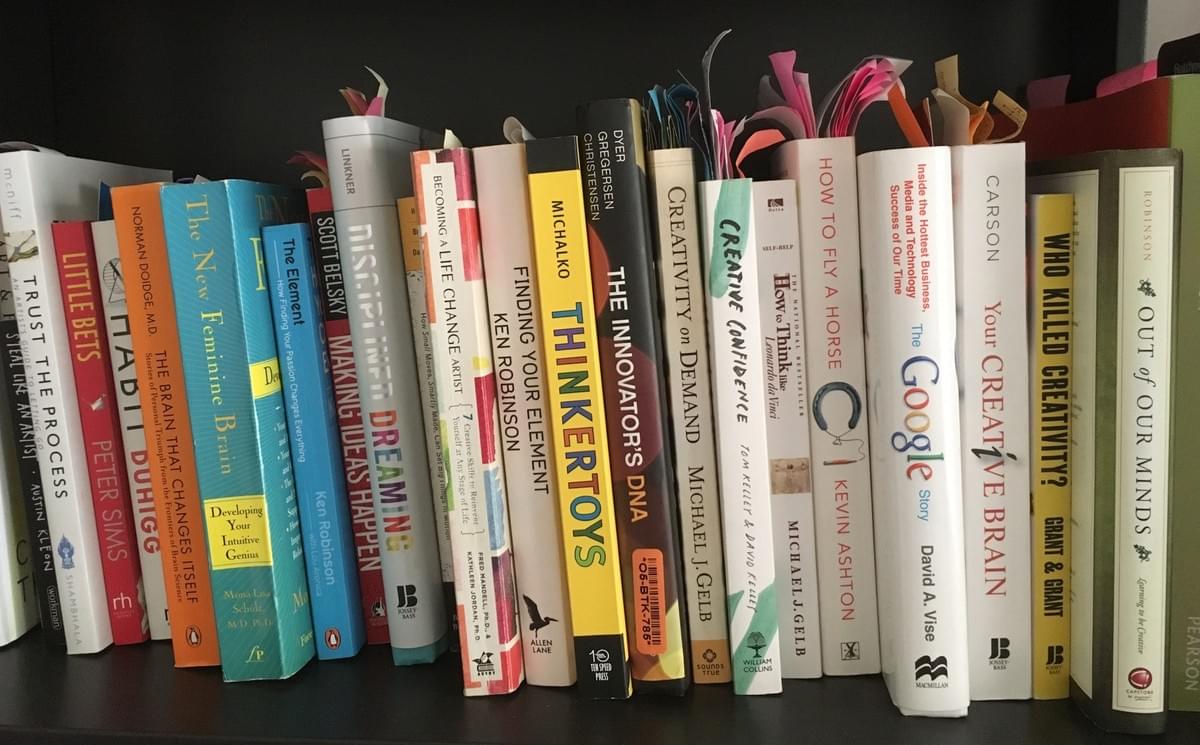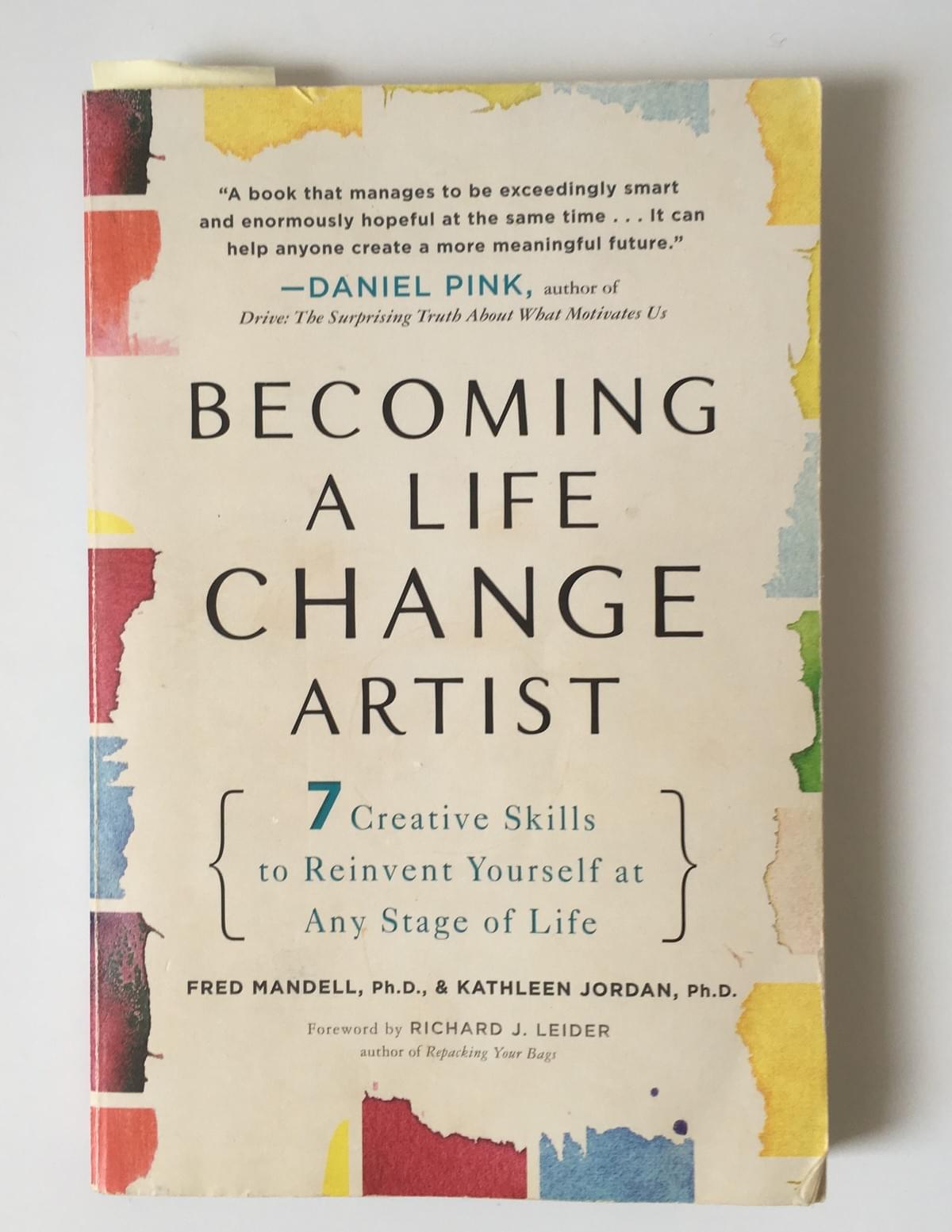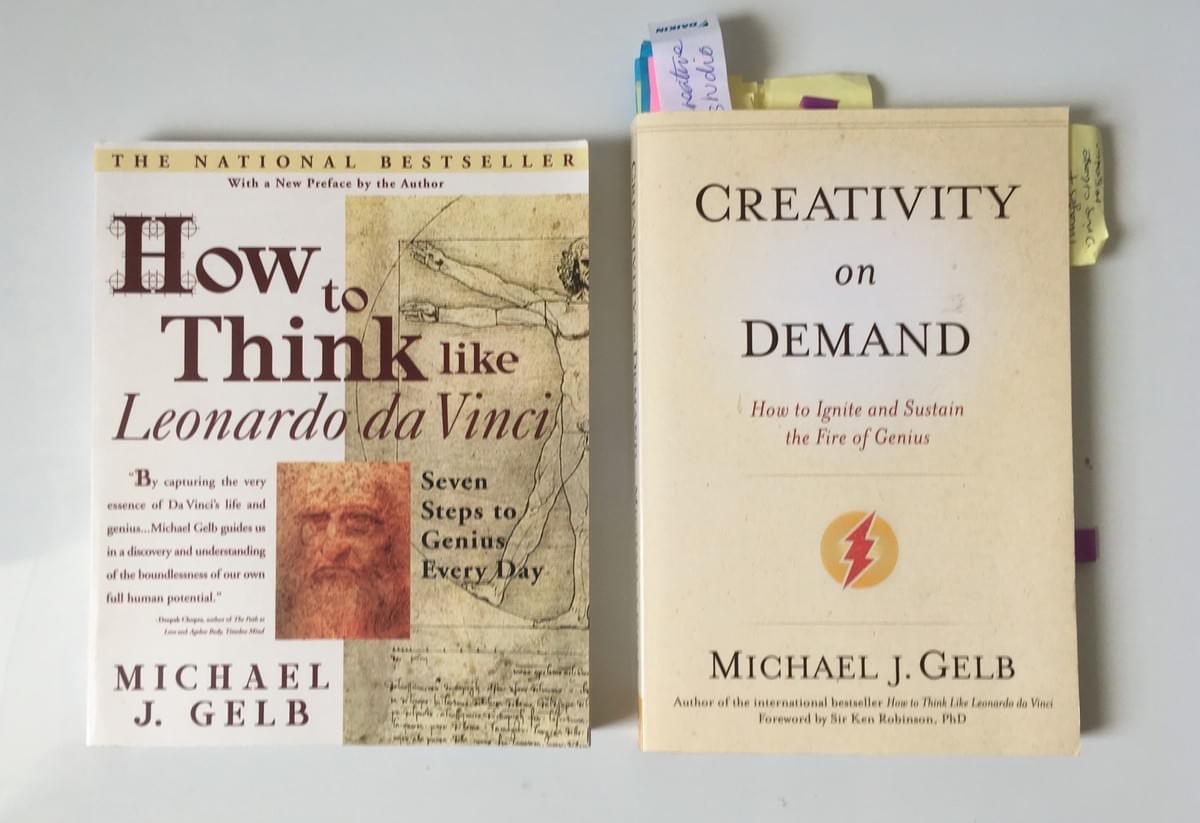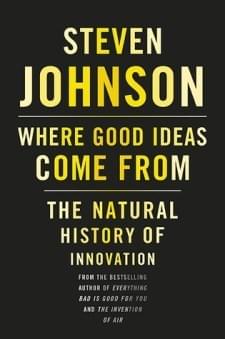
- Resources that might help
you to experiment, discover and integrate creativity into your lives

Books
... that I've read and maybe you could too!
Over the past few years I've immersed myself in both academic and popular reading on the topics of imagination, creativity and innovation. Here are the best for your reading time consideration.

The one that started me off...
What do the great artists all have in common?
That was the question Mandell and Jordan started with ... the result was a way of exploring and discovering the world. In Becoming a Life Change Artist, the authors share their groundbreaking approach through sharing the key strengths that the most creative minds of history and offering a foundation to how we can incorporate this into our own lives.

So what would Leonardo do...?
The steps to everyday genius
In a similar vein, author Michael J. Gelb, books assist to help us expand whats possible by drawing on Da Vinci's notebooks, inventions, and legendary works of art and introduce us to what he believes were Da Vinci's secrets. His next book (and his consulting services) take it the next step with step-by-step exercises and lessons to enable tapping into our creative instincts.

Elvis has left the building...
and Sir Ken has replaced him ...long live the king !
Ken Robinson needs no introduction. His TED talk says it all. I seriously think that he cult like status has done more for promoting imagination and creativity in schools than anyone else. His books are for everyone who is concerned about the economy, education and the environment as he argues, for the sake of our collective future, for transforming education, business, and communities in the twenty-first century.

From the man who bought us the Internet of Everything
... now uncovers the surprising truth behind who creates and how they do it
Ashton reveals patterns for how humans make things and the encouraging part is that everyone can create...the challenging part is that their is no magic moment of creation. He showcases the seemingly unremarkable individuals, gradual steps, multiple failures, and countless ordinary and usually uncredited acts that lead to our most astounding breakthroughs. The lesson is that creating is not magic but work.

If I have seen further it is by standing on the shoulders of giants
... Sir Issac Newton said it... but Steven Johnson turned it into a book and TV series
Johnson investigates the innovation hubs throughout modern time and pulls out applicable approaches and commonalities that seem to appear at moments of originality. He combines the history of innovation and a set of useful strategies for cultivating our own creative breakthroughs.
The main message: Both evolution and innovation thrive in collaborative networks where opportunities for serendipitous connections exist. Great discoveries often evolve as slow hunches, maturing and connecting to other ideas over time.
Check out this great animation of the concept here

Why not explore a crime scene to determine who killed creativity? ....
... and discover why creativity is dying an untimely death
A great 'who done it' way of exploring and building a culture of creativity and innovation throughout an organisation. The '7 Rescue Strategies' then provide proven innovation solutions, from personal issues through to organisational imperatives.
Check out the crime scene here.

Tap into your brain's creative hotspots
... and understand the latest neuroscience research
This title doesn't lie...Your Creative Brain: Seven Steps to Maximize Imagination, Productivity, and Innovation in Your Life, helps to understand the networks that connect our brain ’s ability to “turn on” these networks.
Based on the latest findings in neuroscience using brain imaging and neuropsychological testing, the author has explains these via a model of seven brain states – CREATES brainsets – of creativity. Each of us has the ability to increase our mental functioning and creativity by learning to move flexibly among several brain states.

Most people are born creative
... so how did you become so boring!
well ... maybe not boring, but certainly more cautious, more analytical and more judgemental.
Tom and David Kelley, the IDEO boys, have proved that creativity is not the domain of a chosen few.
Too often, companies and individuals assume that creativity and innovation are the domain of the “creative types.” But these guys show everyone of us is creative.
The value here lies in the principles and strategies that allow us to tap into our creative potential in our work and our personal lives, leading to innovation and problem solving.

Now for some organisational strategies
... that the stuffiest corporate bureaucracies can use
Disciplined Dreaming outlines a 5-part process that aims to transform organisations with a proven case study driven methodology.
I love that he has both a business and jazz background to sell that sweet spot of creativity.
The book is all about understanding that in competitive markets the most important resource is the creative ability and thinking of its people. Amen to that.

Time to get serious... Harvard Business School has entered the building
... with their 'secret sauce' of business success
Backed by Harvard, Dyer, Gregersen and Christensen are the spice girls of innovation. (... remember them?) The book comes as a result of an intensive 6 year study to uncover the origins of creative and often disruptive business strategies in particularly innovative companies.
The research lead them to identify five “discovery skills” that distinguish the most creative executives: associating, questioning, observing, experimenting, and networking... The creative intelligence that we can bottle.

"Without The Artist's Way, there would have been no Eat, Pray, Love.” —Elizabeth Gilbert
Julia Cameron's 'The Artist’s Way' is considered the seminal book on the subject of creativity
... and since then there have been many more powerfully provocative and inspiring works ....these are a few of my favorites.
The War of Art: Break through the blocks and win your inner creative battles
by Steven Pressfield
Art and Fear: Observations on the perils and rewards of artmaking
by David Bayles and Ted Orland
Trust the Process: An artists guide to letting go
by Shaun McNiff
Steal Like An Artist
by Austin Kleon
The Creative Catalyst acknowledges the Traditional Custodians of the lands
in which we live, learn and work.
We are humbled by the knowledge, resilience and creativity of the First Nations.
We pay our respects to the Kulin Nation and all Aboriginal and Torres Strait Islander Elders.
Always was Always will be.
Copyright © thecreativecatalyst.com.au All rights reserved.











